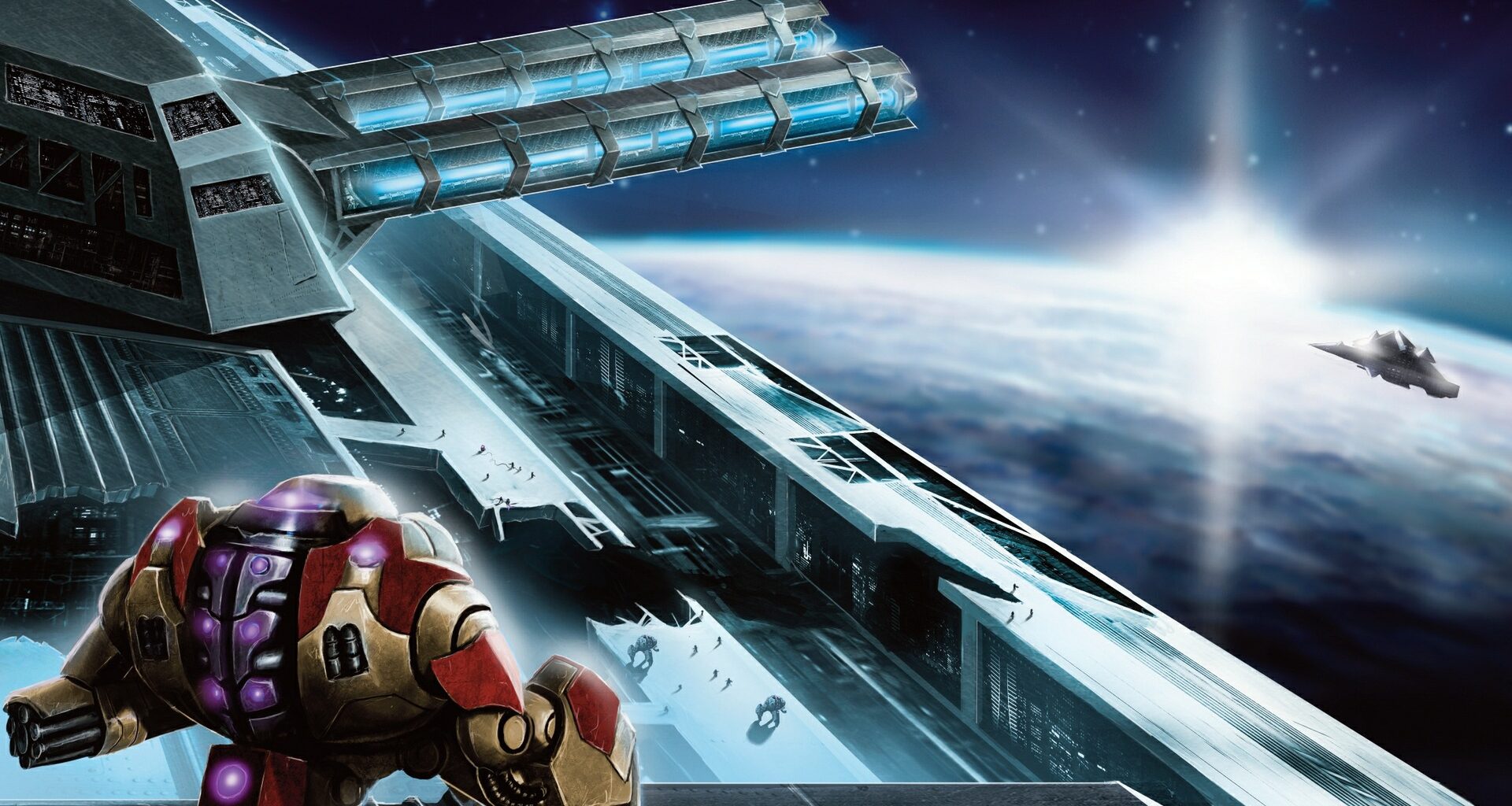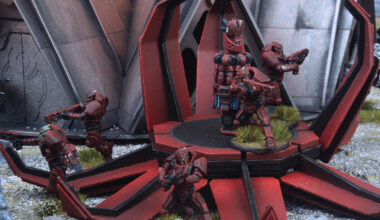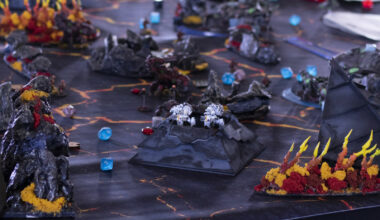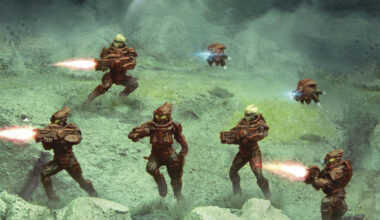Previously, we outlined how Antareans produce simple, but usable, maps that can be understood by humans – the icohex/shardhex system – and ran over some simple tables that located gates in those subhexes. This time we address the elapsed time within the transdimensional ‘tunnel’ between Antares and the system gate – the transition time – and provide a method for identifying to which faction a system might be affiliated.
Transition Time
Each gate on Antares leads to a trans-dimensional tunnel which has its terminus at a system-side gate at the gate horizon. There are two important aspects of Antarean physics associated with the transit time:
- The journey from entry to exit takes an identical time each time it is traversed and whichever direction the ship travels in, whether system-to-Antares or Antares-to-system.
- The time spent within the tunnel is the same whether measured subjectively of externally – there is no time dilation.
- There is no turning back: once a ship has been taken up by a gate, it cannot return until it has been ejected from the transdimensional tunnel at the other end.
You can always set the time for a gate as best fits the narrative for your own campaign, or you can choose or roll a time on the Antarean Gate Transition Time Table, below. Gates which have a transit time of several weeks are seldom used and those gates which have unknown times are assumed to terminate somewhen but the ships and probes making the transition are considered lost!
As can be seen from the table, the vast majority of transit times are more than an hour but less than a day and sometimes the times are negligible. No-one has yet been able to determine what sets a transition time and even the fabled universities of Isor unable to give a reason.
Antarean Gate Transition Time Table
| D100 | Transit Time | Additional (optional) time* |
| 1-10 | 1D5 x 5 minutes | – |
| 11-20 | 1D10 x 10 minutes | – |
| 21-35 | 1D5 hours | + 1D5 x 10 minutes |
| 36-50 | 2D5+5 hours | + 1D5 x 10 minutes |
| 51-80 | 2D10 + 10 hours | + 1D5 x 10 minutes |
| 81-88 | 3D10 + 25 hours | + 1D5 x 10 minutes |
| 89-92 | D5 + 2 days | + 2D10 hours |
| 93-95 | D10 + 7 days | + 2D10 hours |
| 96-97 | D10 + 17 days | + 2D10 hours |
| 98 | D10 + 3 weeks | + D5 days |
| 99 | D10 + 2 months | + D3 weeks |
| 100 | Unknown (greater than one year) | – |
* The extra minutes or hours shown for these transit times are provided if a little more precision and variation is required. These can be used as detailed expansions of other base times by reducing the extended time by one time unit and substituting in a randomly rolled lower time unit.
For example a gate taking D10+3 weeks (a 98) could not only have the additional days stated (+d5) but could also have its hours and minutes calculated just by subtracting a day from the d5 ‘days’ roll and adding 2D10 hours from the 89-97 entries and then 1D5+10 minutes from the 21-88 result rows.
If this level of detail is not needed, just use the base time specified!

Affiliation – Faction
Having identified that a system is in a subhex, we went over how that system is represented on a shardhex map. The systems affiliation – to which faction it belongs or claims political allegiance – is part of that information. Affilliation, sometimes shortened to ‘aff()’, is part of a system descriptor called the Concord Standard System Descriptor (CSSD). We’ll go over the details of the CSSD in a subsequent article, but for now we’ll list the most common mnemonics used for each faction and also provide a table for determining to which faction a system belongs. In the CSSD a system’s affiliation is shown in the format ‘aff(PHC)’, where ‘PHC’ indicates the PanHuman Concord but could be a mnemonic for the faction to which the system belongs.
The Affiliation Table below relies on whether or not a gate is within the area of control of one of the major factions. Before we look at the table, it is worth looking at the type of control each faction has over the systems within its area of control.
The Concord, Senatex and Vorl Dominion are largely in full control of almost all the systems within their borders with the Concord and Senatex having a little influence beyond their borders. All three factions are constantly incorporating new systems: the Concord and Senatex largely take new systems intact as the IMTel believes its primary role is the care and well-being of its citizens; in contrast, a Vorl Ordo taking over any panhuman world is likely to wipe out all the citizens within decades.
It is important to note that there are degrees of homogeneity amongst the three major factions. The Senatex keeps all its systems closely aligned through a huge number of regular IMTel updates, though systems which are more remote or which have long transit times (see above) sometimes reject those updates and turn against the Senatex. In contrast, the Concord has what appears to be a more relaxed view, with the Concord IMTel allowing each major shard (potentially hundreds of thousands of systems) to be very slightly different – until the shard or isolated system differs too far from those around it, that is!
The Vorl Dominion is more fragmented than both the Senatex and Concord, being largely focused around the activities and structure of each individual Ordo swarm. An Ordo is comprised of multiple systems and millions of Vorl, each Vorl in the Ordo being strongly related to each other and part of a single swarm; it might be better to think of the Dominion as a loose alliance of Ordo rather than the largely coherent entities that are the Senatex or Concord. Here, however, war between Ordo’s is not uncommon and are fought to the destruction of the opposing Ordo or the capture of its ruling elite.
There is also a strong difference between IMTel- controlled areas and the mutual defence and trading entity that is the Prosperate. The Algoryn navy may scout for new systems and threats in and around the Prosperate, but the density of Prosperate-aligned systems within its borders is very low: there are only around 3000 associate systems, around 310-320 member or council systems and the 12 systems of the Algoryn themselves that act as capitals and centres of regional oversight. Nonetheless, the 3330 systems in the Prosperate still makes for a very low membership density.
Affiliation Mnemonics
In the last instalment, we saw the Sp:, In: and V: codes for system affiliation, representing Spill, Independent or Freeborn (vardosi) respectively. The following are the most often seen mnemonics used for the CSSD’s aff() declaration.
| AP | The system is affiliated to the Algoryn Prosperate and is inevitably qualified to show whether the system is one of the 300+ a council member systems (AP:CM), which will have a strong Algoryn military presence, or a Prosperate associate system (AP:A). |
| B | Boromite, often followed by a clan or guild name as in ‘aff(B:Clan Highfors)’ or ‘aff(B:Rexet Guild)’. If a single clan and guild control a body or node then that will be given as well, as in ‘aff(B:Rexet Guild Clan Highfors)’. Very few systems are totally owned or controlled by Boromites as they tend to claim bodies throughout a solar system until they have mined out those bodies. |
| D or D:<nation> | An independent or hostile system controlled by a drone swarm or similar machine intelligence. The specific drone nation, if known, is given, as in: D:Virai, D:SITAI, or D:Chryseis. |
| GE/GR/GX | Ghar Empire, Ghar Rebels and Ghar Exiles, though there are no known fully-controlled systems for Rebels and Exiles. Many systems within the boundaries of the Empire only last as ‘GE’ systems for a few decades until they become ruins and switch to the aff(Ruin) status. Given the perils of scouting out Ghar systems, it is thought that many Ghar Empire systems are already ruins and have been abandoned by the Ghar. |
| In | Independent, lesser nation limited to a single established system. In the very rare instances where the nation name is different to the system, the structure ‘In:’ is used. There is a degree of flexibility with the In tag as sometimes it can refer to a well-known species instead: for example, the Hükk homeworld is classed as aff(In:Hükk) – and is left alone! |
| IS | Isorian Senatex. |
| PHC/C3 | PanHuman Concord. C3 is sometimes specifically shown to indicate the object is a Concord Combined Command installation. Within the boundary of the Concord, some C3 systems may also be shard capital systems. |
| Ruin | The system has been laid waste due to accidental catastrophe, war or deliberate extraction of all readily-available resources and is abandoned – many Ghar Empire worlds are now aff(Ruin). |
| Sp:<nation> | is reserved for a Spill nation of two or more fully-established and claimed systems. Where there are multiple systems in an area, a short code is sometimes provided in brackets that other systems on the local map will refer to, as in ‘Sp:TRANLIN (Tra)’. The capital system of a Spill nation is written in capitals. |
| TK | Tsan Kiri (not used but reserved). |
| U | Unclaimed/unaligned or otherwise unknown, typically with a mix of locally significant political structures. This is often used for newly-discovered systems until a more detailed survey can be undertaken. Earth and its solar system in the late 20th century would be classed as aff(U). |
| V or V:<vardos> | Vardosi (Freeborn), for example ‘aff(V: Delhren)‘. This is just recorded as ‘V’ if there is no clear alignment with a given Freeborn house or ‘V:(All)’ if the system is used as a common ground for study, training or for governance – Academy Ullanoi (at 4542.45-14) is one such common university system used for training Freeborn from a great many houses, including the Oszon, Isoptix and Delhren. Where stated as being in control of a system, it may be that the house either controls the main planets in the system or it may just indicate a system in which a Vardos stations its home fleet. Occasionally a domas will be given if a single domas controls a world, as in ‘aff(V:Vynoa domas Exna’ar)’. |
| VO or VO:<ordo> | Vorl Ordo. If known, the ordo name is given as in aff(VO:Dark Claws). When mapping, a group of Vorl systems within 10 subhexes of a VO:M system should all belong to the Ordo controlled from that system. Occasionally, an Ordo will have several major military systems within the area of its influence but when allocating systems to Ordo it is easiest to allocate them to the closest. |
| X | Other loyalty, or an indication of a lack of data or an affiliation which is particularly strange or complex. Often there are details in a notes() entry to the CSSD. Very rarely used. |
Affiliation Table
This is used to randomly determine the faction to which a system owes its primary loyalty and is weighted to give the most representative results. However, there is nothing wrong with overriding a result, for example, by making a shallow gate with a transit time of 10 minutes lead to an Algoryn Prosperate member system (AP:M).
Gates with unknown transit times always have an aff() code of ‘X’ to indicate that there is no data. Of course, you can always set a transit time of several years or decades and assign an affiliation by hand. Such systems will never be military headquarters of any faction or Spill nation.
Each column in the Affiliation Table corresponds to the zone of control of the factions as shown on the map. The Interface column is used when within 2 subhexes of the edge of an IMTel nation or the Vorl Dominion: here, ‘Host’ should be the closest faction – roll randomly if both are equally close, and ‘Opp’ should be the closest, opposing faction.
| Dice Modifiers: Critical Depth can make a significant difference to the systems usability whilst transit time also makes a system more or less accessible. Apply the following DMs to the roll on the Affiliation Table +2 if the gate is Beyond Critical Depth (depth 9+); -1 if the transit time is an hour or less; +1 if the transit time is greater than 24 hours; +3 if the transit time is 3 days (72 hours) or more. For example a gate at Depth 10 with a transit time of 25 minutes would have a DM of +2 for being Beyond Critical Depth and -1 for a fast transit time, giving +1. |
| Key: The following mnemonics are used in addition to the affiliation: :Cap (suffix) This indicates the system is the capital of a Spill fiefdom or micro-empire. Feel free to add nearby systems to this empire and change their affiliation from In as appropriate! :M (suffix) This shows a predominantly military system or one dominated by the military of the stated faction. PHC military systems are expressed as ‘C3’. Senatex military systems may also be regional capital systems. War: (prefix) This indicates an active warzone between the entities stated, the attacker first. On an independent world, the war could be between a host nation and a Spill fiefdom – feel free to choose! VBU Indicates a rare situation. Roll D10 to determine whether Boromite, Freeborn or Unclaimed Ruin: 1-5 = V:< House> home fleet system; 6 = B:<Guild> or clan capital (typically no habitable planet in-system); 7=both a Vardosi and Boromite Guild presence, plus a substantial trading hub; 8–0=Unclaimed Ruins on the planet, almost certainly with researchers from varying factions (U). + or / When control of a system is split between two powers, the ‘+’ or ‘/’ separates the powers vying for peaceful control or in an alliance for control. Of course, most IMTel and Vorl alliances quickly become controlled by one of those powers! |
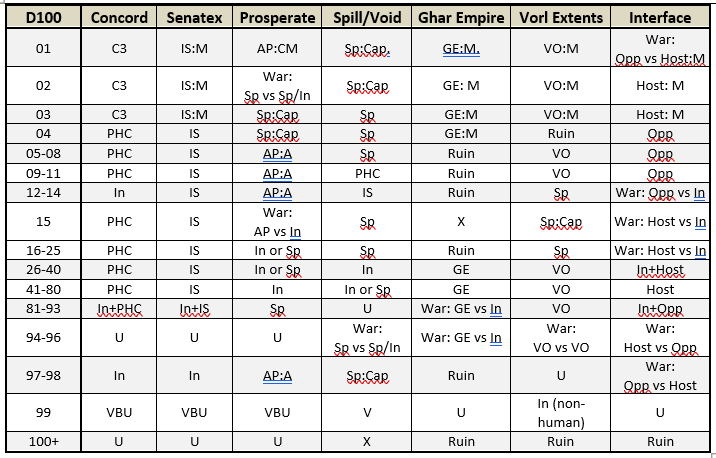
Summary
That’s it for this week. We now have a way of mapping the gate locations around Antares, determining their transit times and generating their political allegiances. In the next part of this series we’ll go on to add a few finer details to the systems, such as spectral type and gate horizon – used to determine travel times – and the state of the primary planet before it reappeared in the 7th Age.
